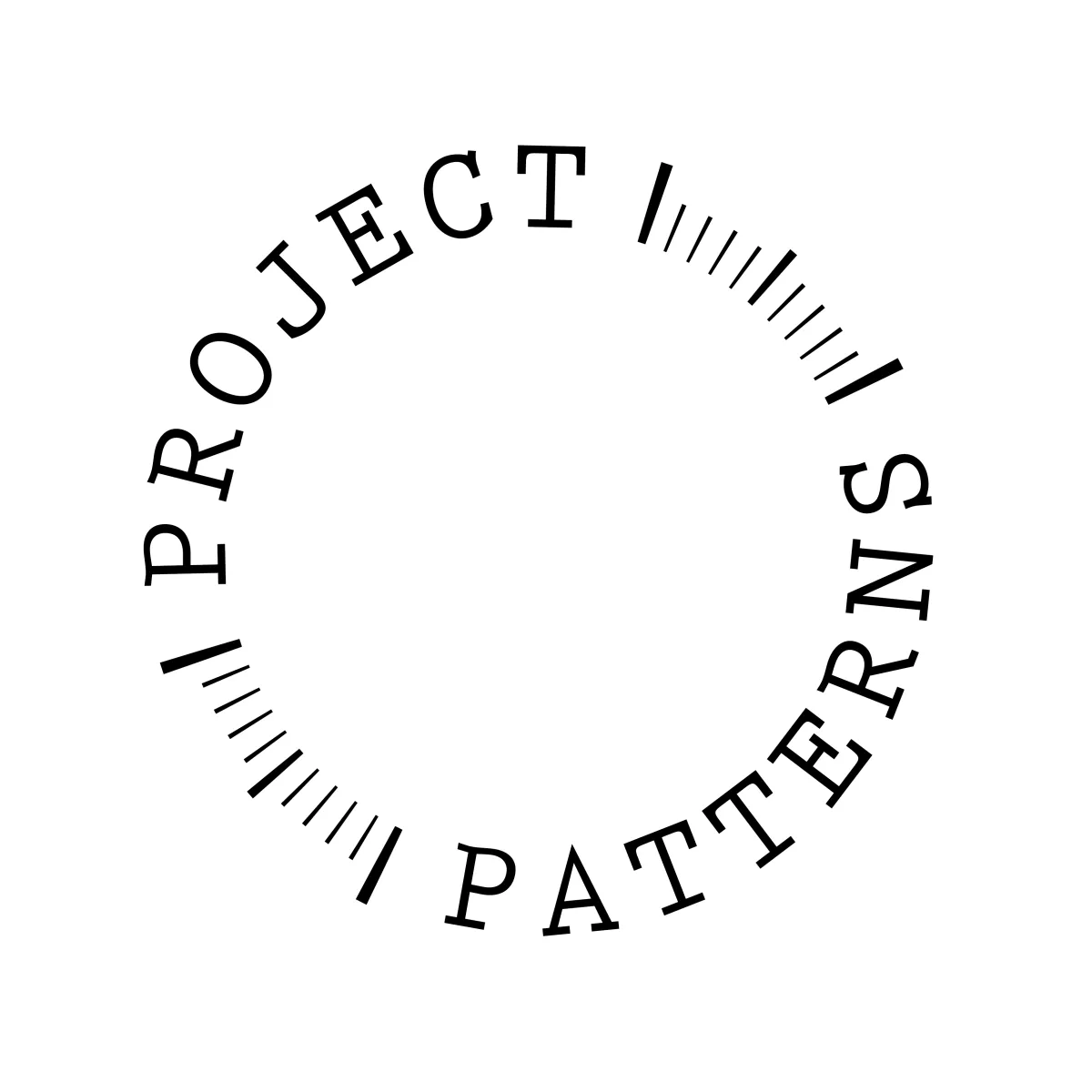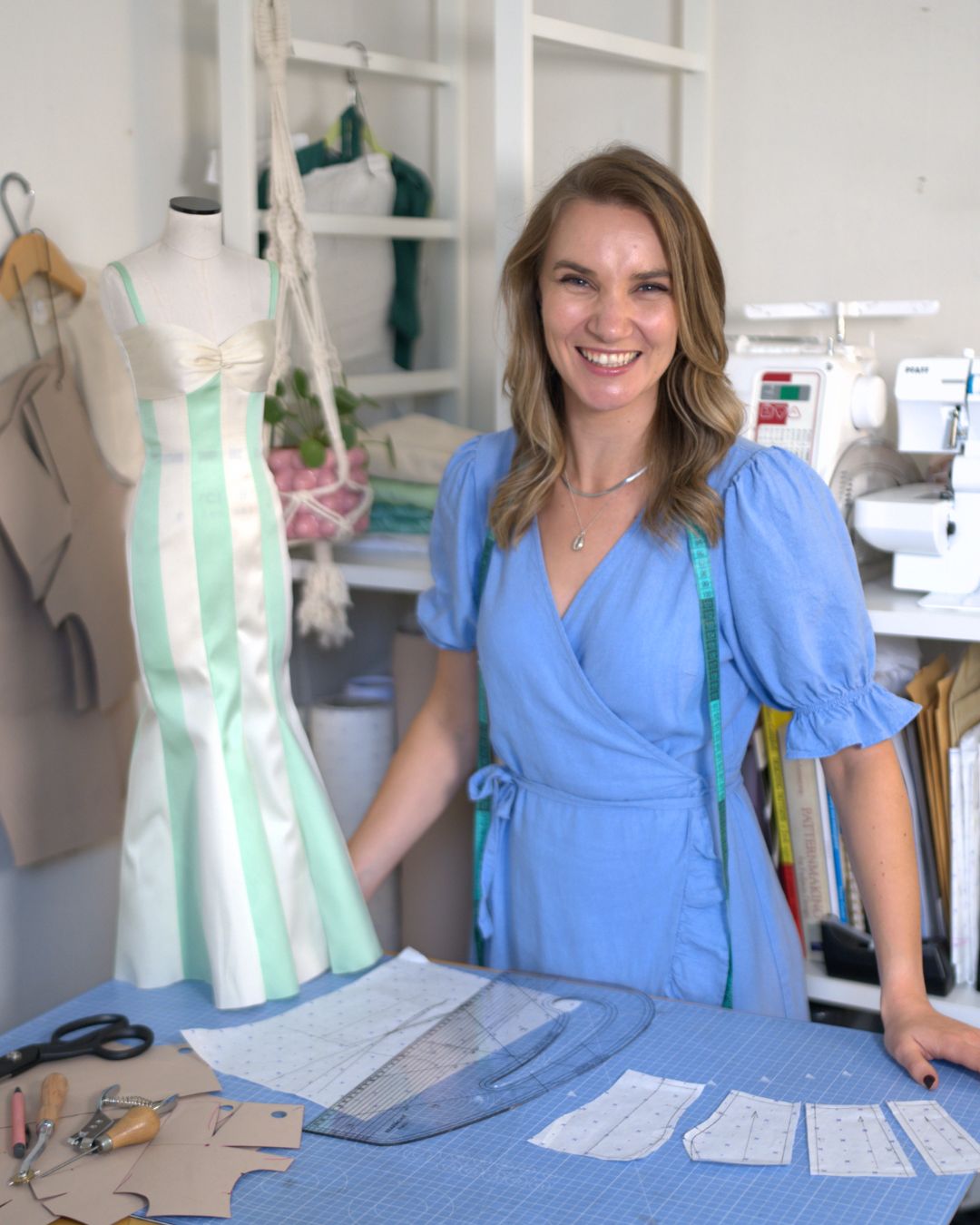How to Use a Self-Drafted Pattern Without Instructions
Ever pulled out a pattern you made weeks ago and thought, “What on earth was I trying to do here?”
No markings, no labels, no notches. Just your past self leaving future-you a cryptic pile of paper. If you're a self-taught sewist who’s ever drafted your own pattern without a single instruction, welcome. You’re not alone.
Whether you’re coming back to a project after a break or trying to make sense of a custom draft, there are ways to confidently work with self-drafted patterns, even if past-you wasn’t the most helpful. Here’s how to make it work, and make it easier next time.
1. Decode what you’ve got
Start with a big-picture assessment:
Do you see curves that suggest armholes or necklines?
Is anything labelled, even faintly?
Can you group pieces into bodice, sleeves, waistband, etc.?
If it’s a total mystery, try holding the pieces up to your body or an existing garment. Sometimes, muscle memory kicks in when you see the shape in context.
👉 Pro tip: If you drafted it on a block, lay the block underneath your pieces and see where it lines up.
2. Lay it out like a jigsaw puzzle
Even when you don’t remember your original plan, your brain loves patterns. Lay the pieces out on a table and:
Match symmetrical shapes
Look for curved seams that might join with straighter panels
Arrange them around a body sketch to see how they might fit together
If you're still unsure, take photos of the layout. Move pieces around, try different combinations. It helps to treat it like a creative puzzle, not a test you have to pass.
3. Add the markings you wish you'd made
You’ve cracked the code, now lock it in. Mark everything clearly:
Label each piece (e.g. “Front bodice, cut 1 on fold”)
Add grainlines
Use sewing pattern markings like notches and dart points
If you’re working directly onto fabric, tailor’s chalk or heat-erasable pens can help. If you’re tracing onto paper, try colour-coding your markings. It makes a big difference when you return later.
👉 Tip box: Create a legend for yourself. Red pencil = darts. Green = fold lines. Blue = notches.
4. Test it with a quick toile
Even if you’re confident, a fast mock-up is worth it. Grab calico or scrap fabric and:
Check the fit
Test how pieces connect
Adjust anything that feels off
Don’t worry if you make mistakes. That’s part of the process. Testing a self-drafted pattern is about building trust in your process, not aiming for perfection on the first go.
You’ll learn what to keep, what to tweak, and what you’ll do differently next time.
5. Write it all down
Before you forget, jot down what you did.
What worked?
What didn’t?
What do you want to try next time?
Even a few quick notes help you track your growth, and avoid the same head-scratching confusion later.
If you’re digitally inclined, snap some pics of the pieces or toile and store them in a project folder. If you’re more analog, start a fit log or keep a binder of pattern notes.
6. Build your own pattern library
Every time you make something new, take a few extra minutes to make it future-proof:
Create a clean version of the pattern with all markings included
Add a rough sketch of the finished garment
Note which block it came from and any design tweaks
Over time, you’ll build a pattern library you can actually use. No more deciphering crumpled scraps, just clear, labelled patterns you can pick up and sew.
7. Create your own instruction sheet
You don’t need a full-blown PDF download, but even a simple list helps:
Order of construction
Key design choices (e.g. invisible zip, bound neckline)
Fabric tips or notions used
It’s especially useful if you plan to repeat the project or adapt it into something else later.
👉 Pro tip: Keep a folder for “repeat makes” patterns you’ve tried, tested, and want to revisit.
8. Give yourself grace, not grief
This part matters.
If you're drafting alone, you’re juggling a lot. Design, fit, technical execution, and no pre-written instruction manual. That’s no small feat.
You’re going to forget things sometimes. You’ll mislabel, reverse pieces, or stitch things inside-out. That’s normal. What matters is that you keep going. Every toile, every draft, every adjustment builds your skill set.
Perfectionism is the enemy of progress, especially in pattern drafting. You don’t need to get it right on the first try. You just need to keep showing up , and keep learning.
9. You don’t have to figure it all out alone
Inside the membership, we walk through all of this, from labeling sewing patterns, to developing your fit log, to testing your own designs.
We also help you troubleshoot real-life issues that pop up when you’re sewing solo — like how to mark notches on slippery fabric, or where to place darts on asymmetrical garments.
It’s not about rules. It’s about giving you tools. And support. And a community that gets it.
Final Thoughts (and a personal story)
When I was in uni, my first pattern cutting lesson involved an orange and a piece of calico. No rulers, no pattern paper — just one challenge: wrap that orange as neatly as possible.
We tried scrunching, folding, pleating. I was hooked. I didn’t realise it at the time, but that orange taught me the same lesson I’ve come back to again and again:
Pattern cutting is just figuring out how to wrap a 3D object with fabric. And there’s more than one way to do it.
So if your pattern doesn’t come with instructions, that’s okay. You can write your own.
And if you’d like some help along the way, the doors to the membership are open right now, but only for a short time. We’d love to have you inside.

